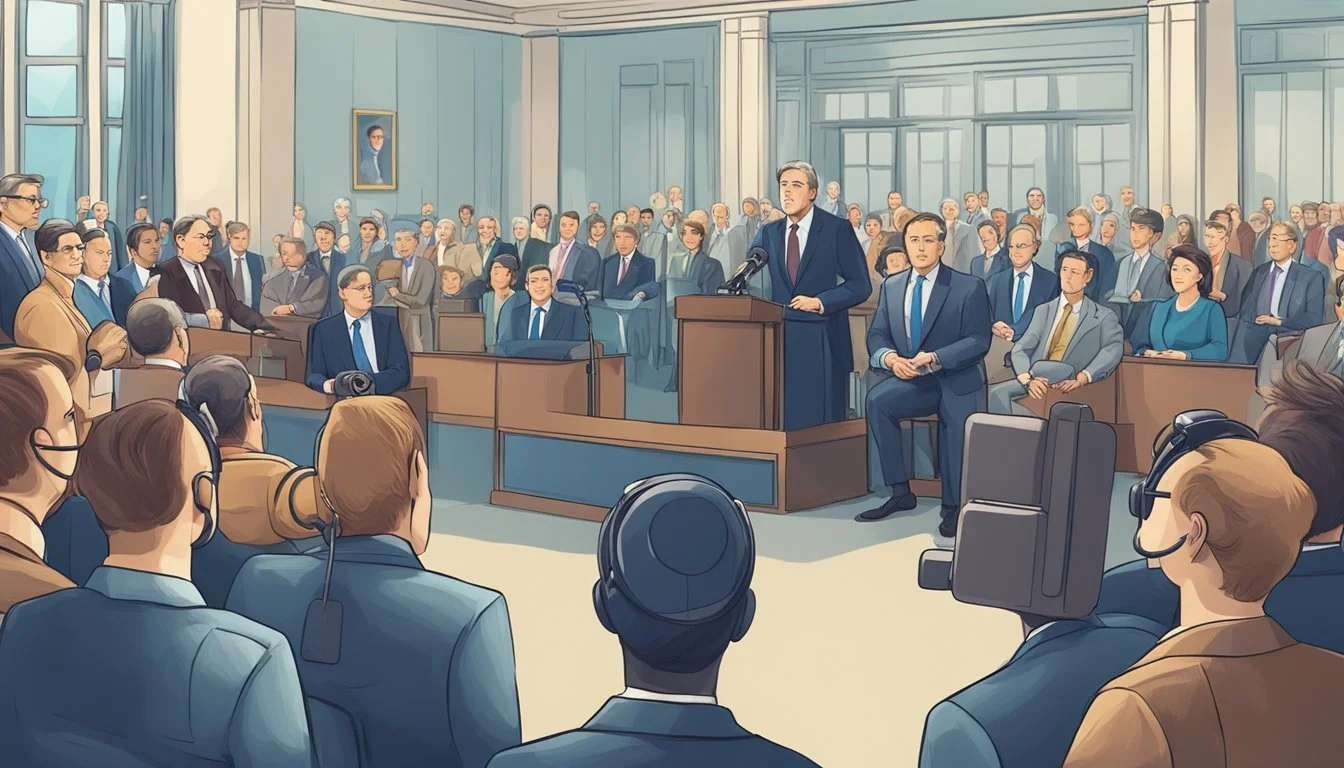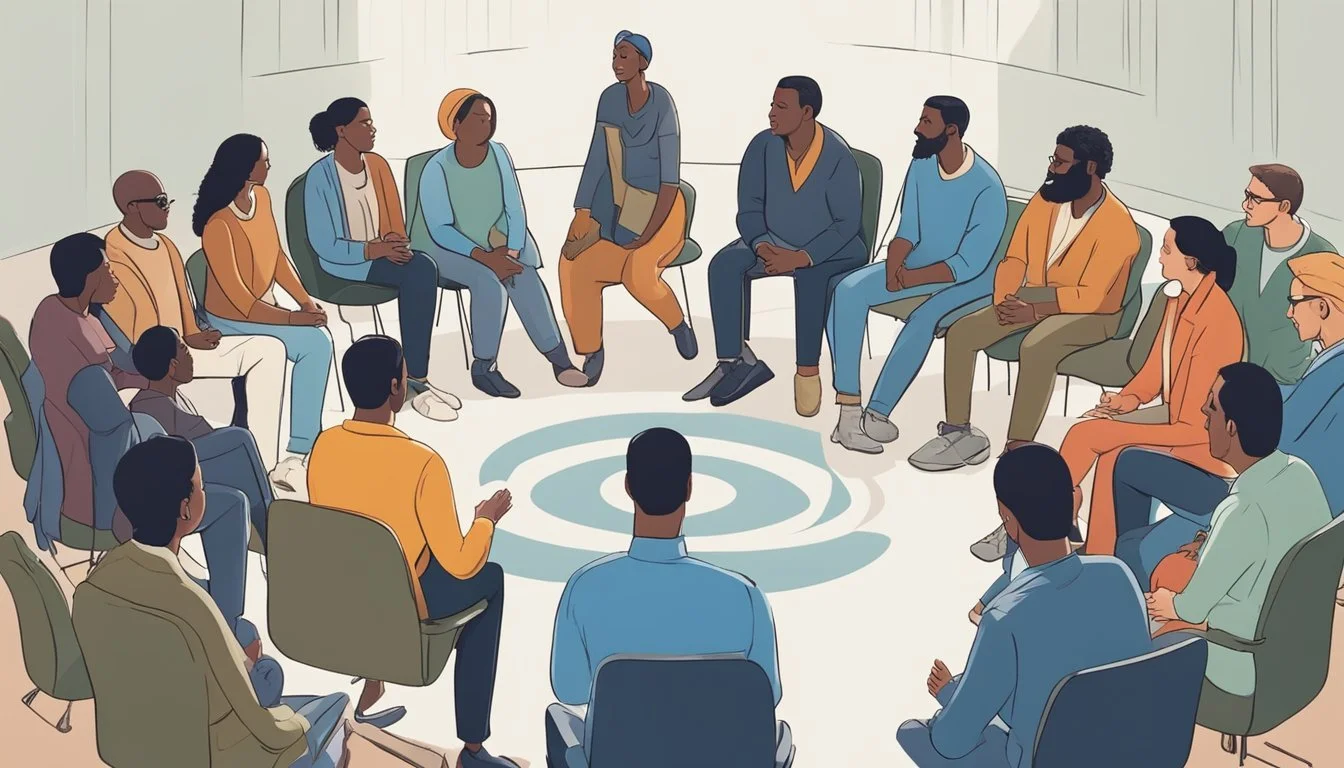UFO Whistleblower David Grusch YouTube Testimony Goes Viral
David Grusch, a former U.S. intelligence officer, has become a prominent figure in the UFO disclosure movement. In 2023, Grusch testified before Congress about alleged secret government programs involving unidentified aerial phenomena (UAPs). His claims have sparked intense public interest and debate.
Grusch's YouTube appearances have amplified his message, reaching millions of viewers worldwide. In various interviews and clips, he discusses his experiences and alleges the existence of recovered non-human craft and biological remains. These videos have fueled further speculation and calls for government transparency.
The impact of Grusch's statements extends beyond social media. His whistleblower status and background in intelligence lend credibility to his assertions, prompting renewed scrutiny of official UAP policies. As the conversation continues, Grusch's YouTube presence remains a key factor in shaping public perception of the UFO phenomenon.
Background of David Grusch
David Grusch is a former intelligence officer who gained prominence for his claims about UFOs and government programs. His career spans over a decade in national security roles, culminating in his decision to become a whistleblower on alleged secret UFO programs.
Early Career and Roles
David Grusch served as an intelligence officer for 14 years. He held high-ranking positions within the U.S. intelligence community, including roles at the National Reconnaissance Office and the Department of Defense. Grusch's work involved top-secret clearances and access to sensitive information.
He participated in various intelligence operations and analyses throughout his career. His expertise in national security matters made him a respected figure within government circles. Grusch's roles required him to handle classified data and contribute to critical intelligence assessments.
Journey to UFO Whistleblowing
In 2019, Grusch was assigned to the Unidentified Anomalous Phenomena Task Force at the Department of Defense. This assignment marked a turning point in his career. During his work with the task force, Grusch claims he learned about classified programs related to UFOs.
Grusch alleges he was informed of long-running government initiatives involving the retrieval and study of non-human craft. These claims include reports of recovered "exotic materials" and even non-human biological remains. In early 2023, Grusch decided to leave his government position and become a whistleblower.
His public statements have sparked intense debate and scrutiny. Grusch has appeared in interviews and before Congress to share his experiences and allegations. His actions have reignited public interest in government UFO programs and potential extraterrestrial encounters.
Unidentified Aerial Phenomena: An Overview
Unidentified Aerial Phenomena (UAPs) have captured public attention and sparked government inquiries in recent years. Sightings of unexplained objects in the sky have raised questions about national security, advanced technology, and potential extraterrestrial activity.
Defining UAPs and UFOs
UAPs refer to airborne objects or visual phenomena that cannot be immediately identified or explained. This term has largely replaced "UFO" (Unidentified Flying Object) in official discourse. UAPs encompass a wide range of observations, from unusual lights to seemingly solid craft with extraordinary capabilities.
The Pentagon and other government agencies use the UAP designation to avoid the cultural baggage associated with UFOs. This shift in terminology aims to approach the topic more scientifically and seriously.
UAP characteristics often include:
Rapid acceleration and deceleration
Unusual flight patterns
No visible means of propulsion
Ability to operate in multiple domains (air, sea, space)
Historical Encounters
UAP sightings have been reported throughout history, with notable increases during World War II and the Cold War era. The U.S. Air Force's Project Blue Book investigated over 12,000 reported sightings between 1952 and 1969.
Famous incidents include:
1947 Roswell incident
1952 Washington D.C. UFO flap
1976 Tehran UFO encounter
2004 USS Nimitz encounter
Military pilots have been key witnesses in many high-profile cases. Navy pilot David Fravor's account of the 2004 "Tic Tac" UAP encounter off the coast of California brought renewed attention to the phenomenon.
Government Stance on UFOs & UAPs
The U.S. government's approach to UAPs has evolved from dismissal to cautious acknowledgment. In 2017, the New York Times revealed the existence of the Pentagon's Advanced Aerospace Threat Identification Program (AATIP), which investigated UAP reports.
Recent developments include:
2020: Creation of the Unidentified Aerial Phenomena Task Force
2021: Release of preliminary UAP report to Congress
2022: Establishment of the All-Domain Anomaly Resolution Office (AARO)
Public hearings have featured testimony from military personnel and former intelligence officials like Ryan Graves. These hearings aim to increase transparency and gather information about potential national security implications of UAPs.
The government's current stance emphasizes the need for rigorous investigation and data collection to understand and address the UAP phenomenon.
Government Response and Transparency
The U.S. government has taken steps to address claims about unidentified aerial phenomena (UAPs) through various oversight mechanisms and public disclosures. Congressional committees have launched investigations, while the Department of Defense has established dedicated task forces to study reported sightings.
Formation of Oversight Committees
The House Oversight Committee created a subcommittee focused on national security issues related to UAPs. This group has been tasked with investigating claims made by whistleblowers like David Grusch. The Senate has also shown interest, with Senator Chuck Schumer proposing amendments to defense bills that would require greater transparency on UAP-related matters.
The Department of Defense established the All-domain Anomaly Resolution Office (AARO) to coordinate UAP investigations across military branches. This office reports directly to senior Pentagon leadership, enhancing government oversight of UAP-related activities.
Congressional Hearings and Reports
Congress has held several high-profile hearings on UAPs, including one featuring David Grusch's testimony. These sessions have allowed lawmakers to question military officials, pilots, and whistleblowers about their experiences and knowledge of government UAP programs.
The House Oversight and Accountability Subcommittee conducted a hearing where Grusch provided classified oral testimony. This closed-door session allowed for the discussion of sensitive information not suitable for public disclosure.
Congress has mandated regular reports from the Defense Department on UAP encounters and investigations. These reports aim to increase government transparency and provide lawmakers with updates on ongoing research and findings related to unexplained aerial phenomena.
The Role of Media and Public Perception
David Grusch's UFO claims gained significant attention across various media platforms. His appearances on YouTube and other outlets sparked widespread public interest and debate about the existence of extraterrestrial technology.
Coverage by Journalists and Media Outlets
Major news organizations initially approached Grusch's allegations with caution. The New York Times, Politico, and The Washington Post reportedly declined to publish his story due to skepticism. The Debrief, however, took a different approach and broke the news.
This selective coverage highlighted the media's role in vetting extraordinary claims. Journalists faced the challenge of balancing public interest with the need for credible sources and verifiable information.
As Grusch's story gained traction, more outlets began covering the topic. This increased exposure led to his congressional testimony and further media appearances.
Public Interest and Community Building
Grusch's YouTube interviews and documentaries drew millions of views. This surge in popularity created a ripple effect, fostering online communities dedicated to discussing UFO phenomena.
UFO enthusiasts and skeptics alike engaged in lively debates across forums and comment sections. The public's fascination with potential alien technology drove demand for more content and information.
Believers found validation in Grusch's claims, while skeptics scrutinized his statements. This divide fueled ongoing discussions and speculation about the nature of UFOs and government secrecy.
Social Media Influence and Discussion
Twitter became a hub for real-time reactions to Grusch's revelations. Hashtags related to his name and UFO sightings trended regularly, amplifying the reach of his message.
UFO researchers like Jeremy Corbell and George Knapp used their social media platforms to share updates and analysis. Their posts often went viral, further spreading Grusch's claims to wider audiences.
Fan bases formed around key figures in the UFO community. These groups actively shared and promoted content, creating a self-sustaining ecosystem of UFO-related information and speculation on social media platforms.
Technological Implications and Research
David Grusch's claims have sparked discussions about potential advanced technologies and their implications for scientific research. These allegations raise questions about reverse engineering programs, extraterrestrial technology, and the possibility of new physics discoveries.
Reverse Engineering Program Initiatives
Several government agencies and private companies have reportedly engaged in reverse engineering programs focused on unidentified aerial phenomena (UAP). These initiatives aim to understand and potentially replicate advanced technologies observed in UAP encounters. Researchers analyze materials, propulsion systems, and energy sources to gain insights into their functioning.
Efforts involve interdisciplinary teams of engineers, physicists, and materials scientists. They examine recovered artifacts using advanced analytical techniques like spectroscopy and electron microscopy. Some programs focus on replicating observed flight characteristics, while others investigate energy generation methods.
Progress in these areas could lead to breakthroughs in aerospace, energy production, and materials science. However, the classified nature of many programs makes it difficult to verify specific advancements.
Extraterrestrial Technology Research
Research into alleged extraterrestrial technology spans various fields, including propulsion, energy generation, and materials science. Scientists examine reported UAP capabilities like instantaneous acceleration, hypersonic speeds, and trans-medium travel.
Studies focus on exotic materials with unusual properties, such as metamaterials with negative refractive indices. Researchers investigate potential applications in fields like quantum computing, telecommunications, and energy storage.
Some scientists explore the possibility of manipulating gravity or spacetime for propulsion. This research could lead to revolutionary transportation methods and space exploration techniques.
Challenges include limited access to alleged artifacts and the need to distinguish between terrestrial and potentially non-terrestrial technologies.
Physics and Potential Extra Dimensions
UAP research has led some scientists to explore unconventional physics theories, including the possibility of extra dimensions. These investigations aim to explain observed phenomena that seem to defy current understanding of physics.
Researchers examine theories like string theory and M-theory, which propose additional spatial dimensions beyond the known four-dimensional spacetime. Some scientists hypothesize that UAPs might utilize these extra dimensions for propulsion or energy generation.
Studies also focus on quantum entanglement and its potential role in instantaneous communication or travel. Experiments explore the boundaries of quantum mechanics and its applications to UAP-related phenomena.
This research could lead to paradigm shifts in our understanding of fundamental physics and the nature of reality. However, many of these theories remain highly speculative and require further experimental validation.
Military and Aviation Perspectives
David Grusch's claims have sparked discussions among military personnel and aviation experts. Aviators and Navy pilots have shared their experiences, while concerns about flight safety and training protocols have emerged.
Testimonies from Aviators and Navy Pilots
Military veterans and active-duty pilots have come forward with accounts of unexplained aerial phenomena. Navy pilots reported encounters with objects exhibiting advanced flight capabilities beyond known technology. These sightings often involve high-speed maneuvers and sudden changes in direction that defy conventional aerodynamics.
Aviators have described unusual radar signatures and visual observations during training exercises and combat missions. Some pilots express frustration over the stigma associated with reporting such incidents, fearing ridicule or career repercussions.
Sensor and video data from aircraft systems have provided additional evidence, capturing images of unidentified objects. This data has been analyzed by military intelligence units, contributing to ongoing investigations into these phenomena.
Impact on Flight Safety and Training
The increasing number of reported encounters has raised concerns about flight safety. Military officials are reassessing training protocols to prepare pilots for potential interactions with unidentified aerial phenomena.
New guidelines have been implemented for reporting and documenting unusual sightings. These procedures aim to gather more comprehensive data while ensuring the safety of military personnel during flight operations.
Aviation experts are evaluating the need for updated sensor systems and detection methods to better identify and track these objects. The goal is to enhance situational awareness and reduce the risk of mid-air collisions or other safety hazards.
National security implications are being considered, prompting reviews of existing air defense strategies. Military leaders are weighing the potential threats posed by unidentified craft with advanced capabilities.
Legal and Protection Measures for Whistleblowers
Whistleblowers face complex legal challenges when disclosing sensitive information. Laws exist to safeguard those who expose wrongdoing, but their effectiveness varies.
Legal Landscape and Challenges
Whistleblowers often navigate treacherous legal waters. They risk retaliation, job loss, and legal action for breaching confidentiality agreements. Some face prosecution under the Espionage Act if they reveal classified information. Lawyers specializing in whistleblower cases help clients understand their rights and potential risks.
Whistleblowers with security clearances, like those working in SCIFs, face additional hurdles. They must follow specific reporting channels to avoid legal repercussions. UFO whistleblowers like David Grusch encounter unique challenges due to the sensitive nature of their claims about extraterrestrial life.
Whistleblower Protection Acts
Several laws aim to protect whistleblowers from retaliation. The Whistleblower Protection Act of 1989 shields federal employees who disclose government wrongdoing. The Intelligence Community Whistleblower Protection Act covers those in intelligence agencies.
These acts establish procedures for reporting misconduct and prohibit employer retaliation. However, their scope is limited. Private sector employees often rely on other statutes or state laws for protection. Whistleblowers must carefully document their disclosures and any subsequent retaliation to build a strong legal case.
Fostering a National Conversation
David Grusch's YouTube appearances have sparked widespread discussions on unidentified aerial phenomena (UAP) across political, scientific, and public spheres. This discourse has led to increased engagement from various stakeholders, pushing for transparency and further investigation.
Engagement from Political Figures
Several politicians have taken notice of Grusch's claims, leading to increased scrutiny of UAP-related issues. Senators Marco Rubio and Kirsten Gillibrand have been vocal advocates for UAP transparency, pushing for declassification of government information.
Representative Tim Burchett has also been actively involved, calling for public hearings on the matter. These political figures have used their platforms to amplify Grusch's message and demand answers from intelligence agencies.
Their involvement has lent credibility to the conversation and encouraged broader public interest in UAP phenomena.
Bipartisan Groups and Legislation
The UAP issue has transcended party lines, with bipartisan groups forming to address the topic. The Senate Select Committee on Intelligence has worked collaboratively to include UAP reporting requirements in intelligence authorization acts.
Americans for Safe Aerospace, a non-partisan organization, has gained traction in advocating for UAP research and disclosure. This group has been instrumental in pushing for legislation that would require government agencies to release UAP-related information.
The bipartisan nature of these efforts has helped legitimize the UAP conversation and move it from fringe topics to mainstream political discourse.
Outreach Programs and Agencies
Government agencies have responded to the growing national conversation by implementing outreach programs. The Department of Defense established the All-domain Anomaly Resolution Office (AARO) to investigate UAP reports and engage with the public.
NASA has also launched its own UAP study team, bringing scientific rigor to the investigation. These initiatives aim to foster open communication between the government and the public on UAP matters.
Public forums and town halls have been organized to allow citizens to share their experiences and concerns. These outreach efforts have helped bridge the gap between official channels and public interest in UAP phenomena.
Personal Narratives and Public Figures
David Grusch's YouTube appearances have sparked discussions about UFO experiences and government involvement. His accounts, along with those of other key figures, have brought attention to the topic of unidentified aerial phenomena.
Experiences of Key Witnesses
David Grusch, a former intelligence officer, shared his UFO-related experiences on YouTube. He claimed the U.S. government possesses alien craft and bodies. Ryan Graves, a former Navy pilot, also spoke about his UFO encounters in interviews.
George Knapp, an investigative journalist, has covered UFO stories for decades. He has interviewed numerous witnesses and officials on the subject. These personal accounts have contributed to public interest in UFOs.
Influence of Public Servants and Politicians
Rep. Tim Burchett has been vocal about UFO transparency in Congress. He participated in hearings where Grusch testified about alleged government UFO programs. Chuck Schumer proposed legislation for the release of UFO-related documents.
The Director of National Intelligence plays a role in overseeing UFO investigations. This office has released reports on unidentified aerial phenomena. These actions by public figures have increased government engagement with the UFO topic.
Sightings reported by military personnel have influenced policy discussions. Some officials have called for more open dialogue about these incidents. These efforts have led to increased public awareness and Congressional interest in UFOs.
Final Thoughts on UAP and National Security
UAP sightings raise important national security questions. The Pentagon and intelligence agencies take these phenomena seriously, allocating resources to investigate potential threats.
Congress has increased oversight of UAP-related programs in recent years. This aims to improve transparency and ensure proper handling of any anomalous phenomena encountered.
Some experts argue UAP could represent advanced technology from foreign adversaries. Others suggest more exotic origins. Regardless, understanding these occurrences is crucial for maintaining security.
The UAP topic intersects with multiple areas of concern:
Airspace safety
Potential technology breakthroughs
Geopolitical implications
Scientific advancements
As investigations continue, balancing secrecy and public disclosure remains challenging. Officials must weigh national security needs against the public's right to information.
UAP research may lead to technological innovations with wide-ranging impacts. Any discoveries could significantly affect humanity's understanding of physics, aerospace, and our place in the universe.









